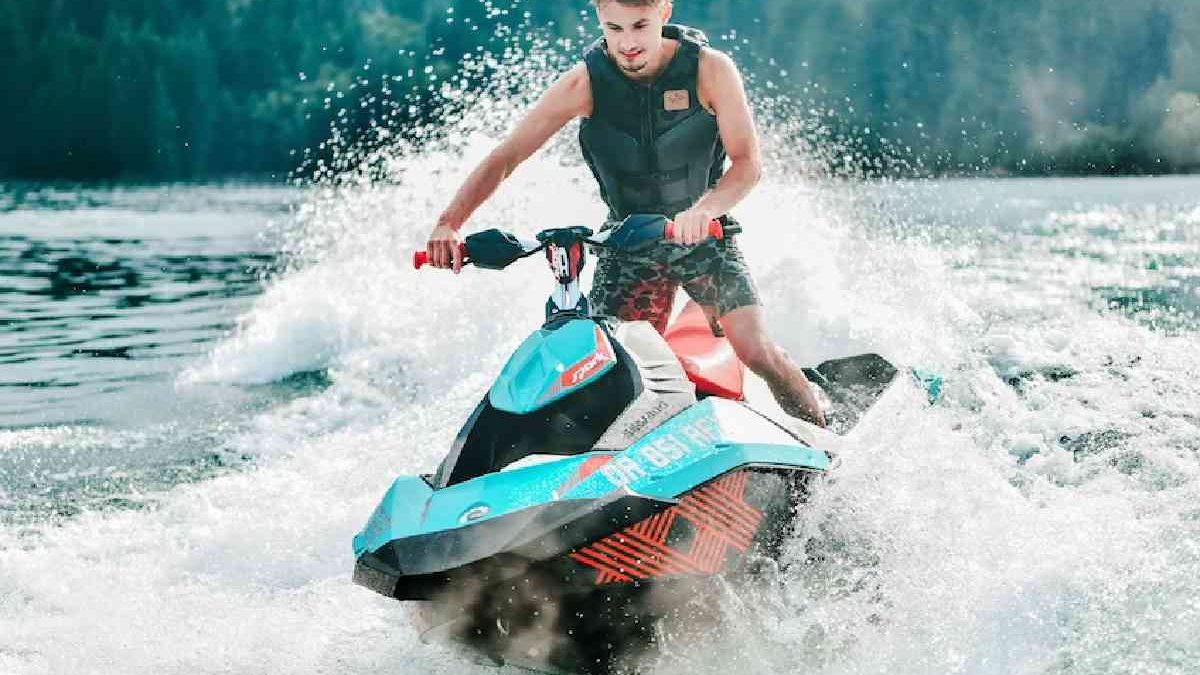What Is The Risk When A Pwc Passes Too Closely Behind Another Boat? A dangerous blind spot arises when a PWC passes too closely behind another boat. The larger boat will block out the range of vision of the PWC (personal watercraft), meaning it can’t see other approaching boats, and the other boats can’t see the PWC.
Table of Contents
What Should a PWC User Do to Reduce The Danger of An Accident or Harm on The Boat?
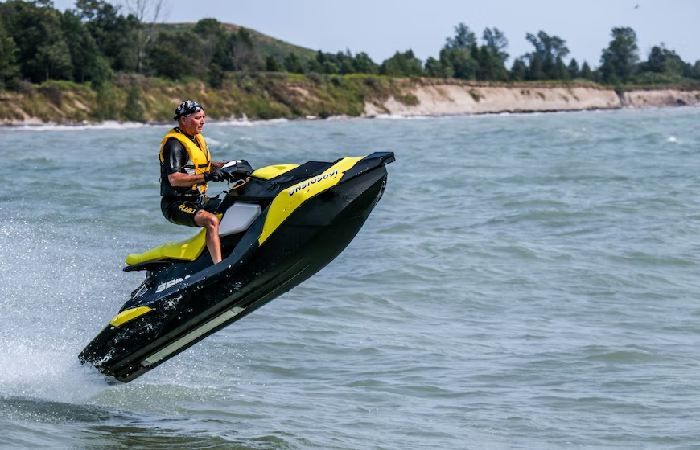
To prevent an accident, boat and PWC users should:
- Obey the navigation rules.
- Keep a look out for navigational aids.
- Keep an eye on everything and assign one person the “lookout.”
- Maintain a safe speed, particularly in crowded areas and at night.
- Before making any turn, look in all directions.
What Causes Blind Spots On a Watercraft?
According to experts, most decisions makes by our unconscious mind. It creates blind spots and unconscious prejudgments that may border your vision and possibly impact your actions.
Which Action Is a PWC Safer?
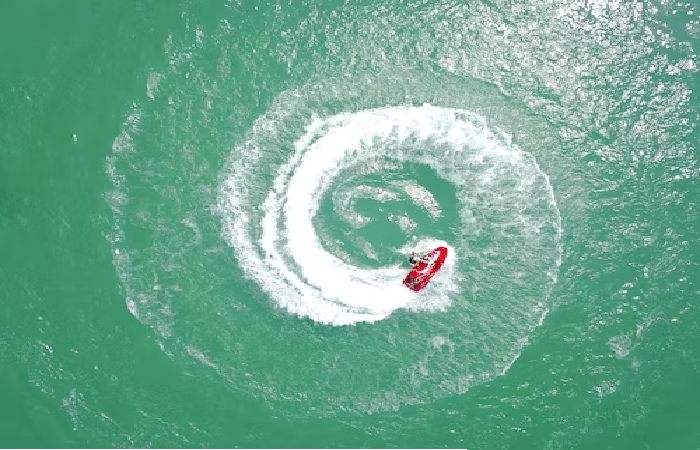
Towing a skier behind a three-person PWC with two people aboard is safe for a PWC. A PWC is a personal watercraft known as a water scooter, jet ski, or boatercycle. It is a recreational watercraft that may operate by sitting or standing on it instead of sitting inside.
What Are The Features Of a PWC?
Side View and Operator’s View of PWC Parts
Stern: The back of a boat or personal watercraft.
Bow: The front of a boat or personal watercraft.
Draft: The water depth required to float a boat or personal watercraft.
Water is drawn toward the impeller through an opening in the hull.
Intake Grate: A screening cover over the intake that keeps big material out.
What Are The Three Significant Roles Of A Boating User In Preventing Accidents?
Accidents are easily avoidable if each boat user meets three significant roles.
- Maintain good seamanship.
- Maintain awareness.
- Keep a safe speed.
Can A Youngster Sit In Front Of A Personal Watercraft?
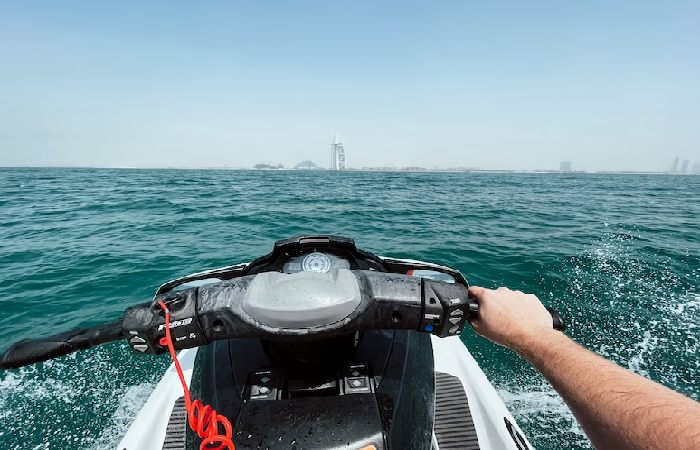
Any PWC passenger should be able to securely grab onto the person in front of them or to the handholds while maintaining both feet firmly on the footrests. Children that are too small to ride shouldn’t be allowed to do so. In addition, a passenger on a PWC should never be seated in front of the user.
Common Reasons For PWC Accidents
Unfortunately, the one factor that can lead to a PWC accident most frequently is user error. The following are the main contributing factors to PWC crashes:
- Recklessness
- Excessive speed
- Whether or sea conditions are dangerous
- Lack of Experience
- Mechanical Defect
Recklessness
PWC is a lot of fun, but the adrenaline rush of riding one may often get the best of us, leading to reckless driving. There are various kinds of reckless driving, varying from driver lack of attention and high speed to drinking and driving. The best way to avoid these accidents is to keep calm and always be alert, no matter how much fun you’re having.
Excessive speed
A PWC on the water is comparable to a motorcycle on the road. They’ve been built to accelerate quickly and reach tremendous speeds. Going 65-67 mph on a PWC is a thrilling experience, but it can also be dangerous.
Going this speed in any vehicle or vessel can be risky, especially in waterways. Many new riders indicate they feel most at ease at speeds of no more than 35-40 mph!
It is more dangerous to use a PWC without brakes, and the danger increases when the operator is unskilled
Whether or sea conditions are dangerous
Trying to ride your PWC out on the sea is risky when the weather seems to be changing.
Going out on rough water can be just as dangerous, especially if visibility is poor or it’s getting dark. Furthermore, most states have rules that prevent PWC riding between sunset and morning, which is perfectly reasonable. Jet skis not mean to ride at night!
You will significantly reduce your risk of an accident if you check the weather report before leaving and leave long before the end of the day.
Lack of Experience
Many watercraft accidents occur solely due to the user’s lack of experience. For example, drivers with no boating safety education or instruction involve 84 per cent of personal watercraft (PWC) incidents.
Mechanical Defect
Mechanical breakdown is another common cause of accidents. While riding a PWC, many things can go wrong, from malfunctioning pumps to dead batteries. We carefully maintain our PWCs to guarantee that they are in optimum working condition, ensuring that you have no problems riding the waves.
PWC accidents commonly result in the following injuries
- Bone fractures
- Burns
- Neck and back injuries are severe.
- Ankle fractures
- Orbital socket dislocation
- Eardrum damage
- Wrist fracture
- Injuries to the brain
- Injuries to the spinal cord
Those wounded in a jet ski or PWC accident should get medical attention from a competent practitioner. In addition, it is critical to obtain MRI, CT, and Neurology studies to evaluate the extent or scope of injuries.
Safety Tips To Avoid A Jet Ski Accident
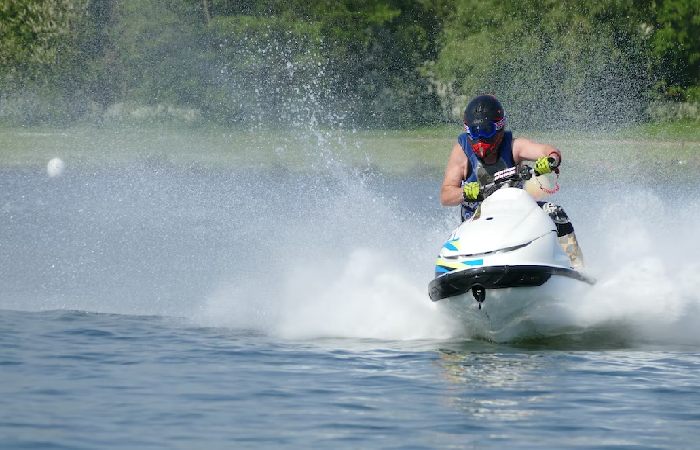
- In less than two feet of water, never run your PWC.
- Connect the line from the start/stop switch to your life jacket or wrist.
- Ensure your passenger(s) know you are about to depart.
- Wear the proper PWC safety equipment and a wetsuit, gloves, eyewear, and non-slip shoes for you and your passenger(s).
- Maintain constant awareness of your surroundings, especially boats, other PWC, docks, and underwater items.
- Never operate a PWC while impaired by drink or drugs.
- Do not drive too fast.
- Do not make a sharp turn.
- Keep an eye on your teenagers while they ride the PWC.
What Is PWC For Boats?
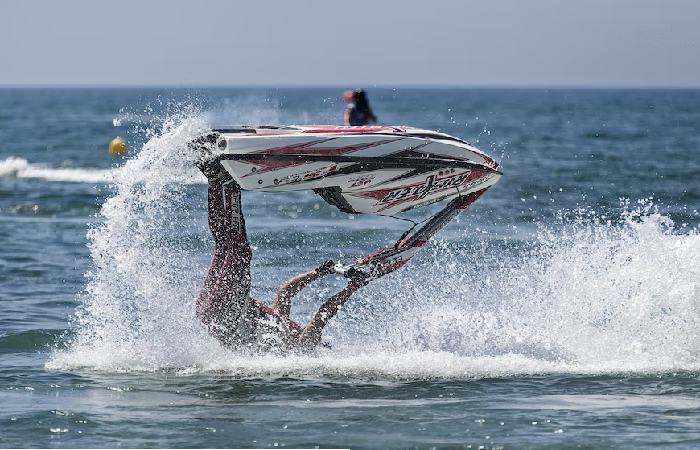
A personal watercraft (PWC) is a small vessel with an inboard jet drive designed to be operated by a person or people sitting, standing, or kneeling on the vessel slightly than inside the boat. The United States Coast Guard classifies PWC as inboard watercraft fewer than 16 feet in length.
What exactly is a PWC hull?
PWC’s hull is the waterproof shell around which the entire vehicle is built. In addition, each speed boat has a top deck that covers the shell. These two shells combine to form a waterproof body holding the engine and other vital components.
What Is The Name Of The Right Side Of A PWC?
When facing the bow, the port side is the left side of the boat. The right side of a boat refers to as the starboard side.
What Is The Name Of The Bottom Of A PWC?
The hull of a PWC is its bottom. The keel is a “spine” on the bottom of the hull of a PWC, whereas the pad is the flatter section towards the back.
What Actions Are Permissible For A PWC?
Operating a PWC Legally
- You are ignoring boating restrictions listed along the water’s edge.
- We were weaving our way through heavy traffic at a faster-than-slow pace.
- Riding your PWC at high speeds in circles or crisscross patterns in the same place for extended periods.
Conclusion
In all the above articles, we discussed some important points related to What Is The Risk When A PWC Passes Too Closely Behind Another Boat? When you are travelling in a boat and are close to another boat in your PWC, you risk a serious accident as a consequence of placing yourself in a blind spot. This is because oncoming boats cannot see you, nor can you see them if you’re travelling in a group or attempting to execute stunts on another ship—the risk of injury, damage, and even legal penalties. Therefore, keeping at least 200 feet of spacing between boats when travelling by boat is essential. We hope that the content information will be helpful.
Related Search Terms:
what is the risk when a pwc passes too closely behind another boat?
what is the risk when a pwc passes too closely
what is the risk when a pwc passes too closely behind another boat
what is the risk when a pwc passes
pwc blind spots
blocks spot
in the heat of the night blind spot
pwc meaning boat
what side do you pass an oncoming boat
since they are small and fast pwc are
boat passing
pwc operator
boats flipping over
bwc boats
shaq’s jet
what is the best way to avoid being run over by your own pwc or motorboat?


